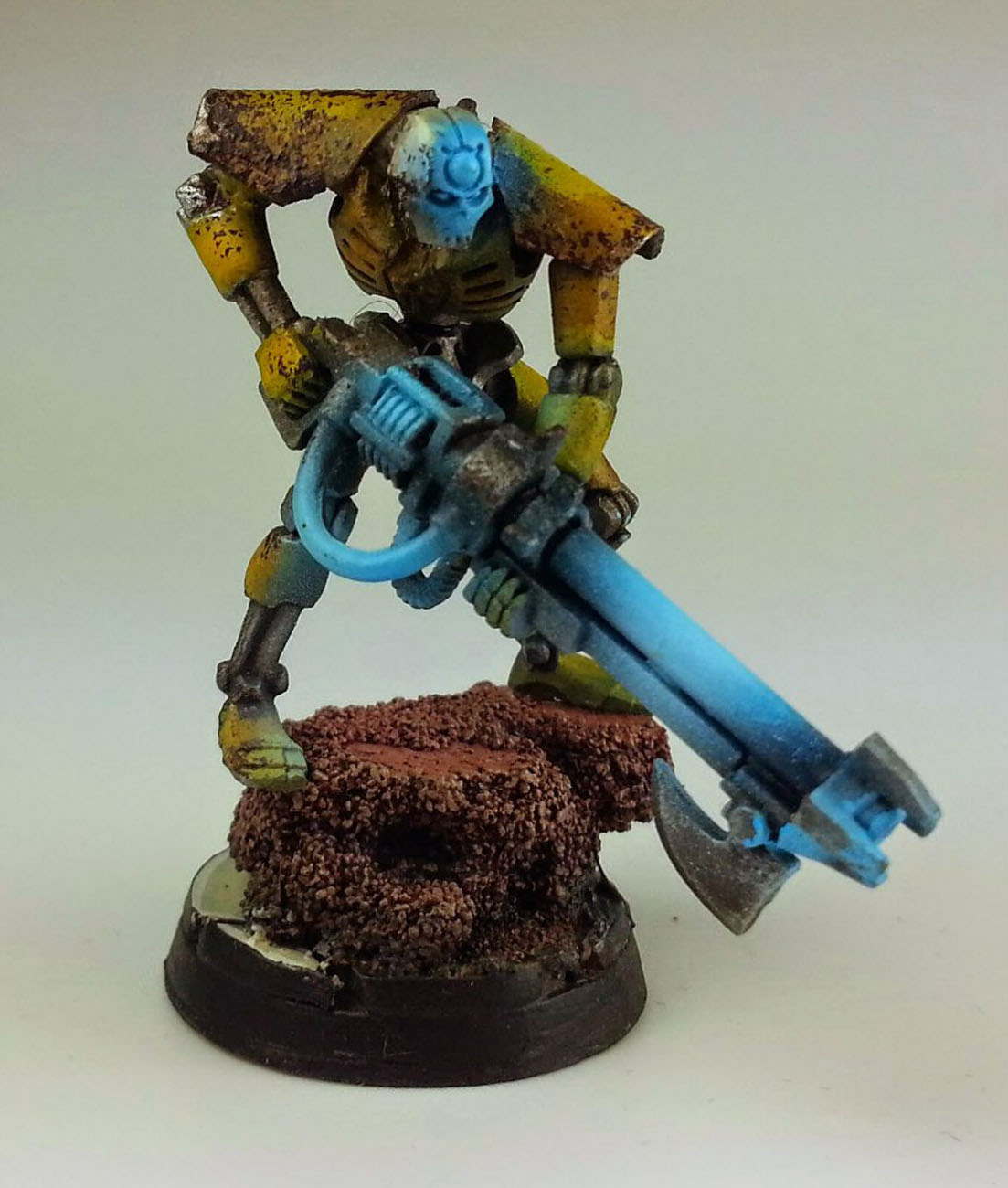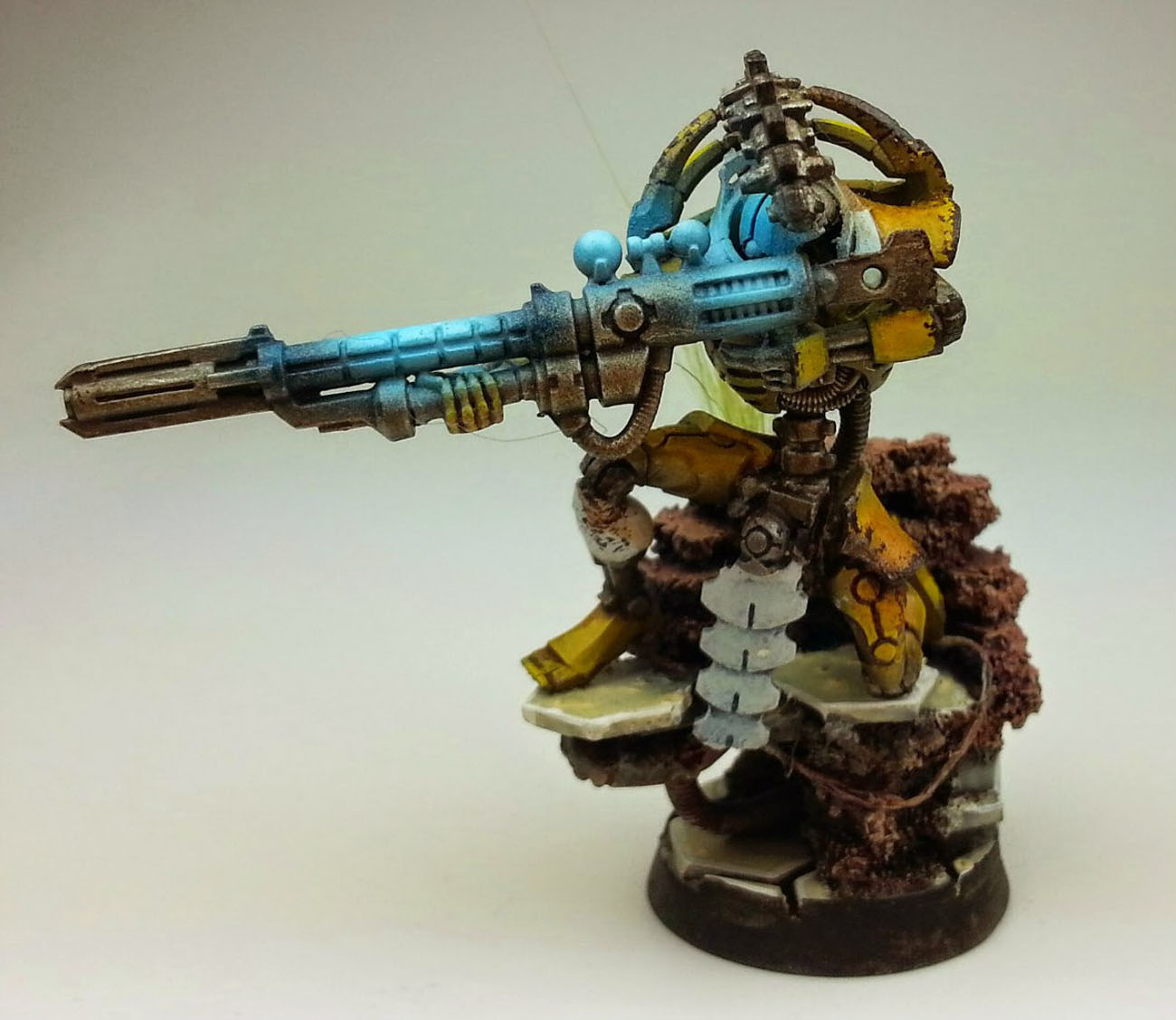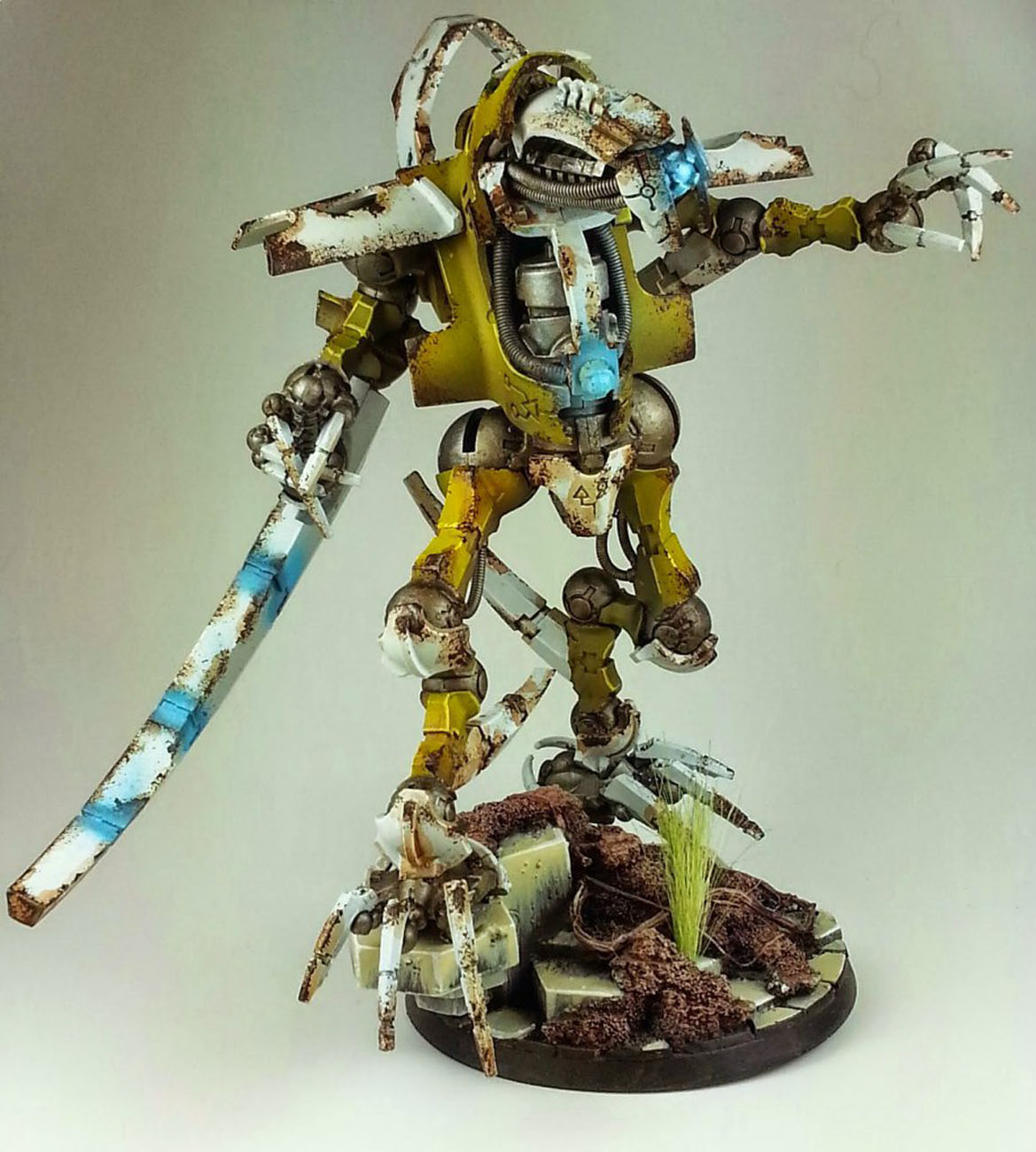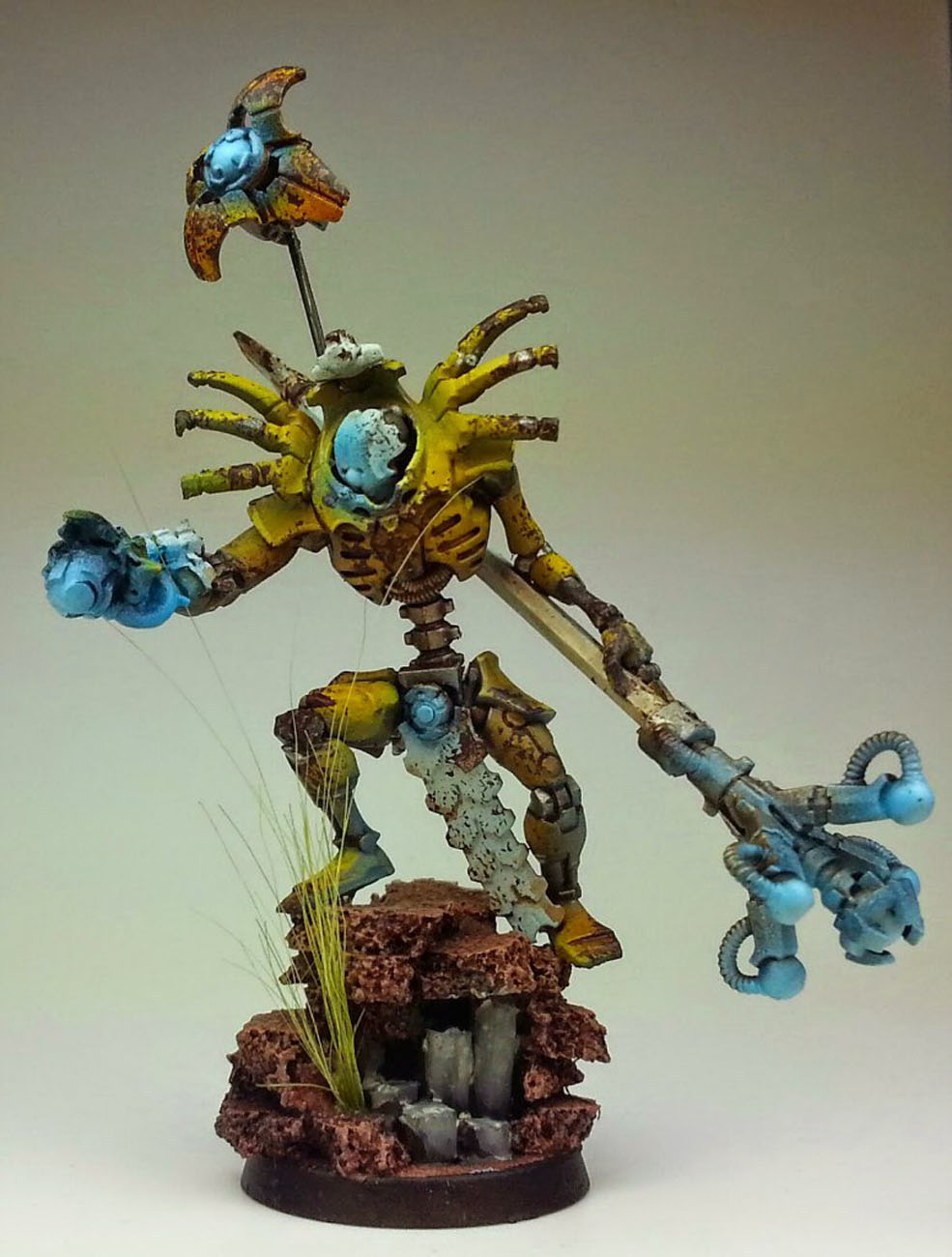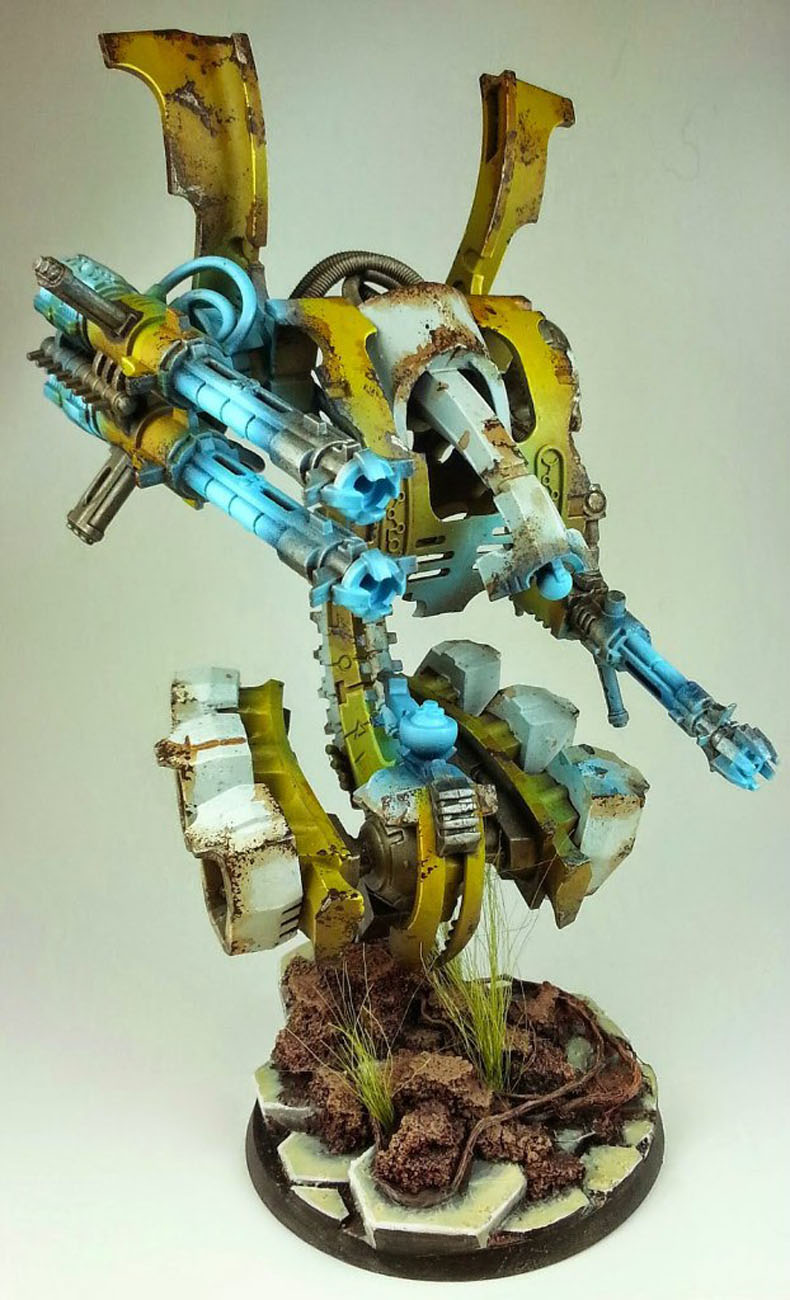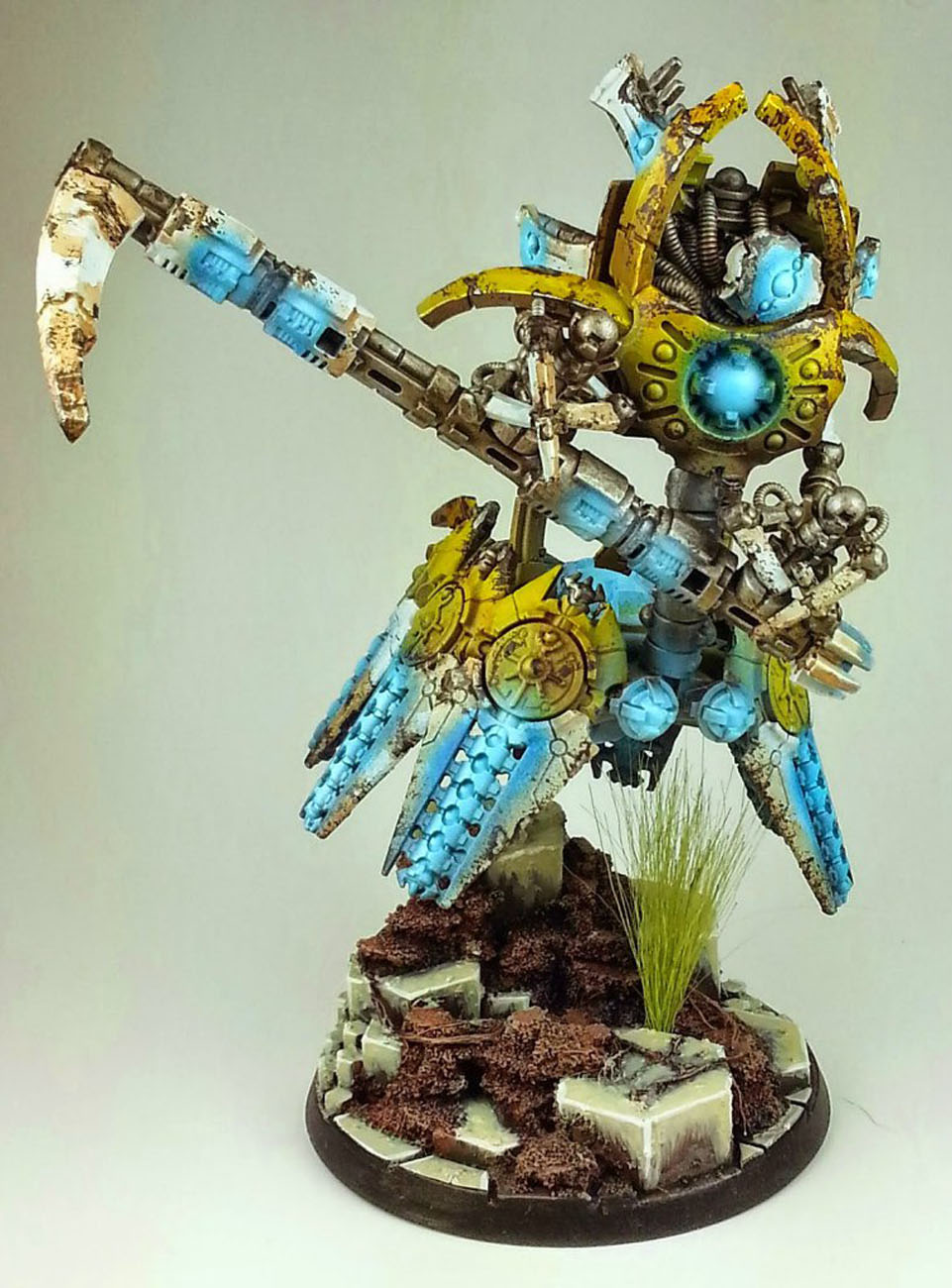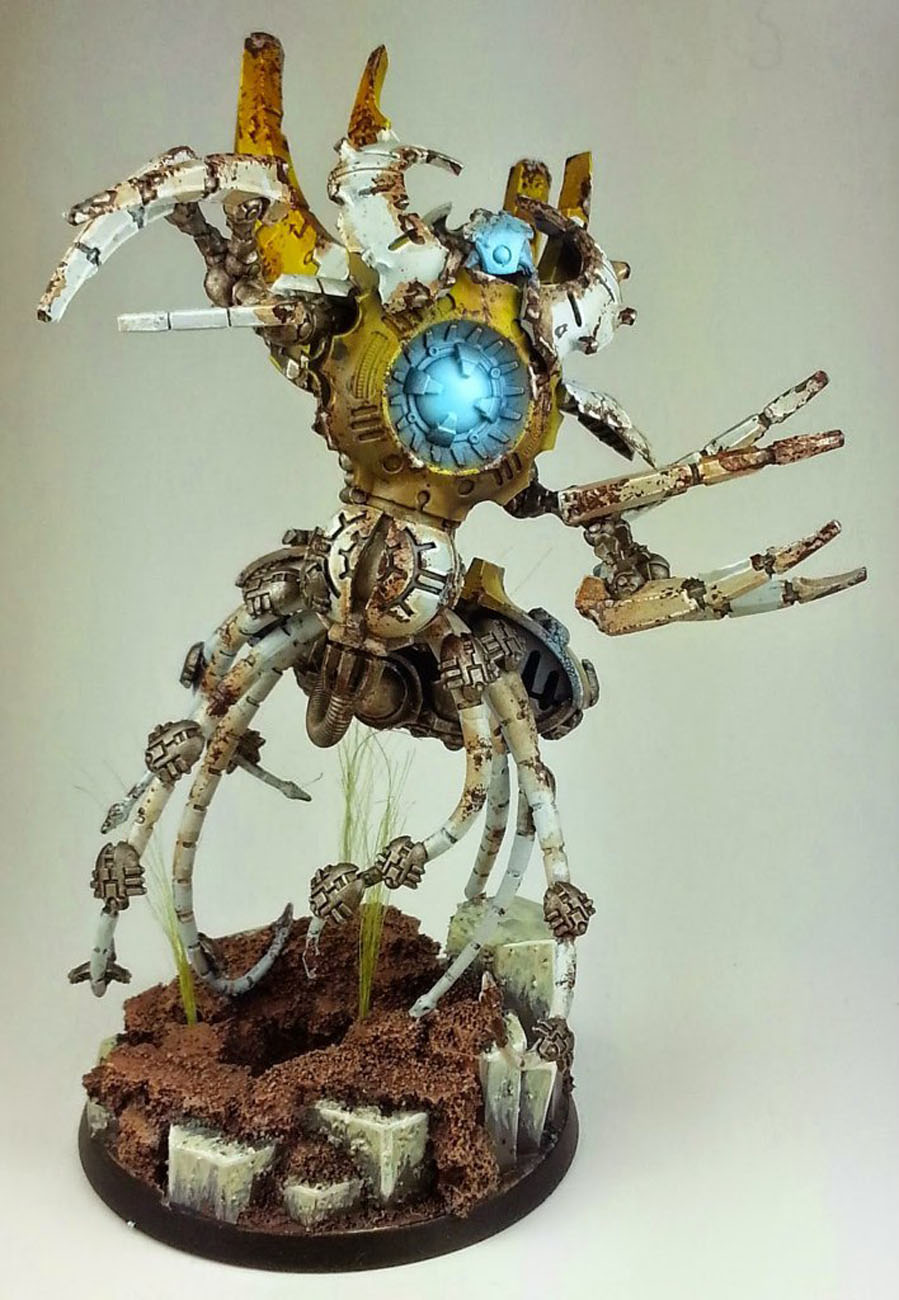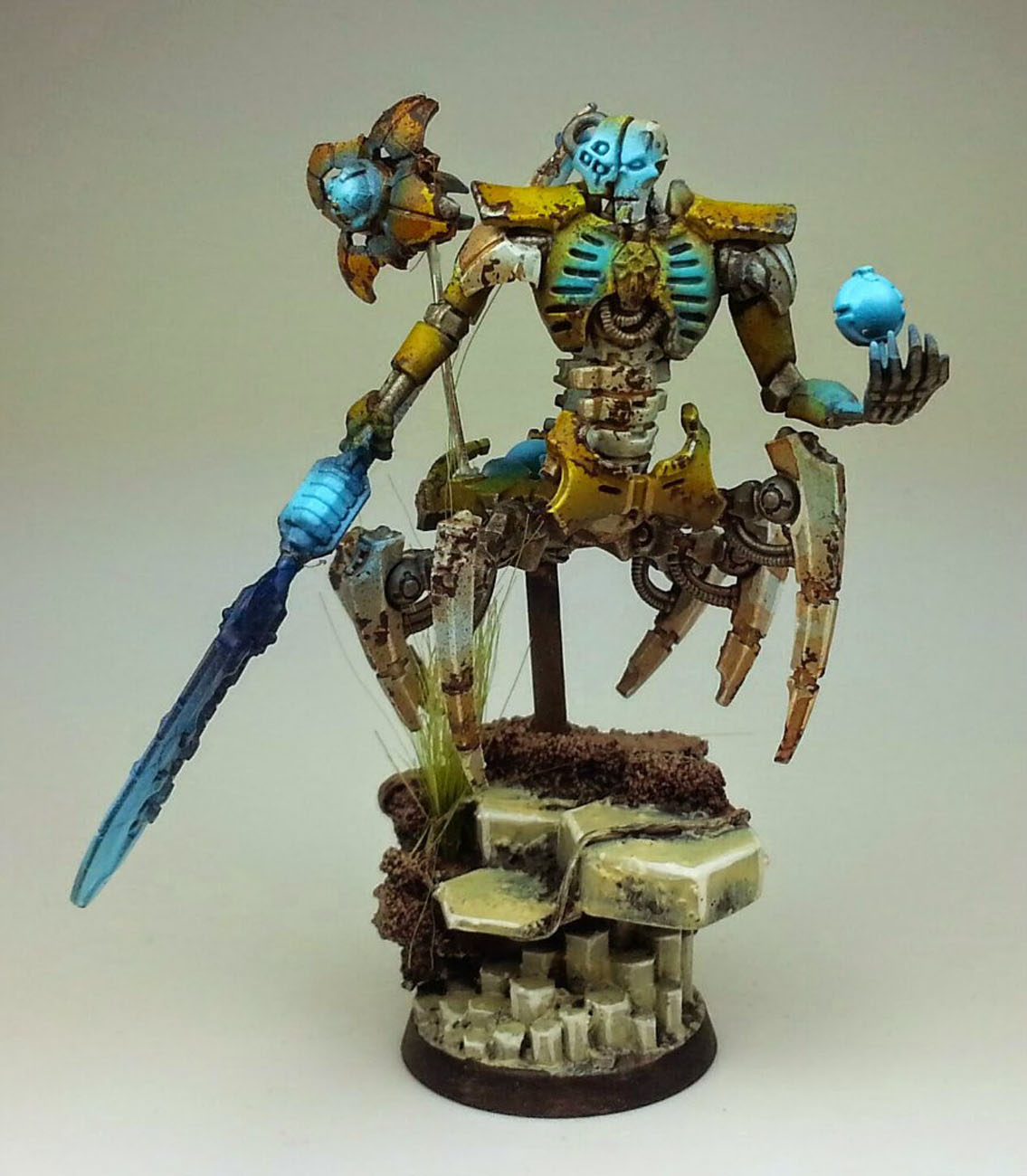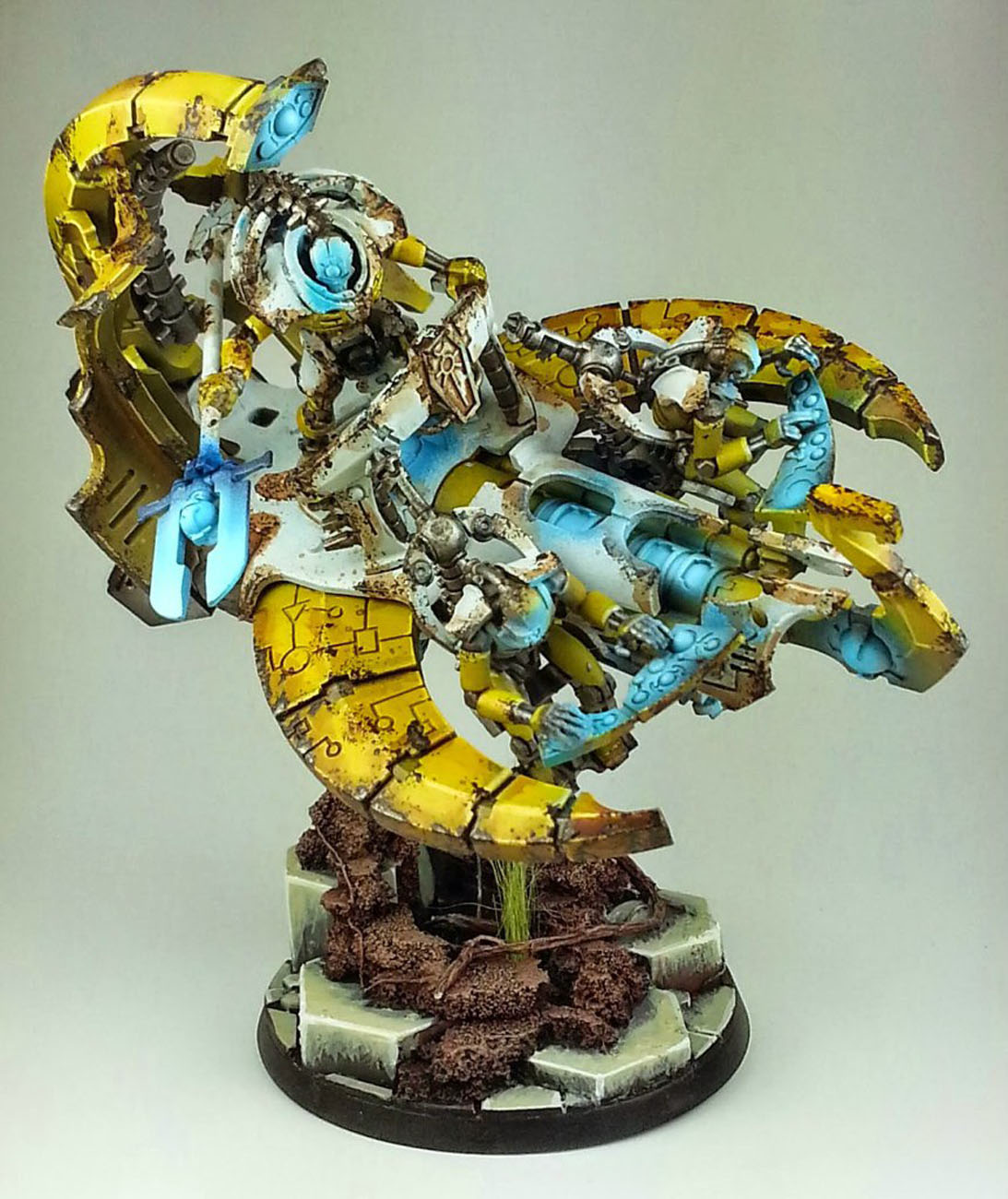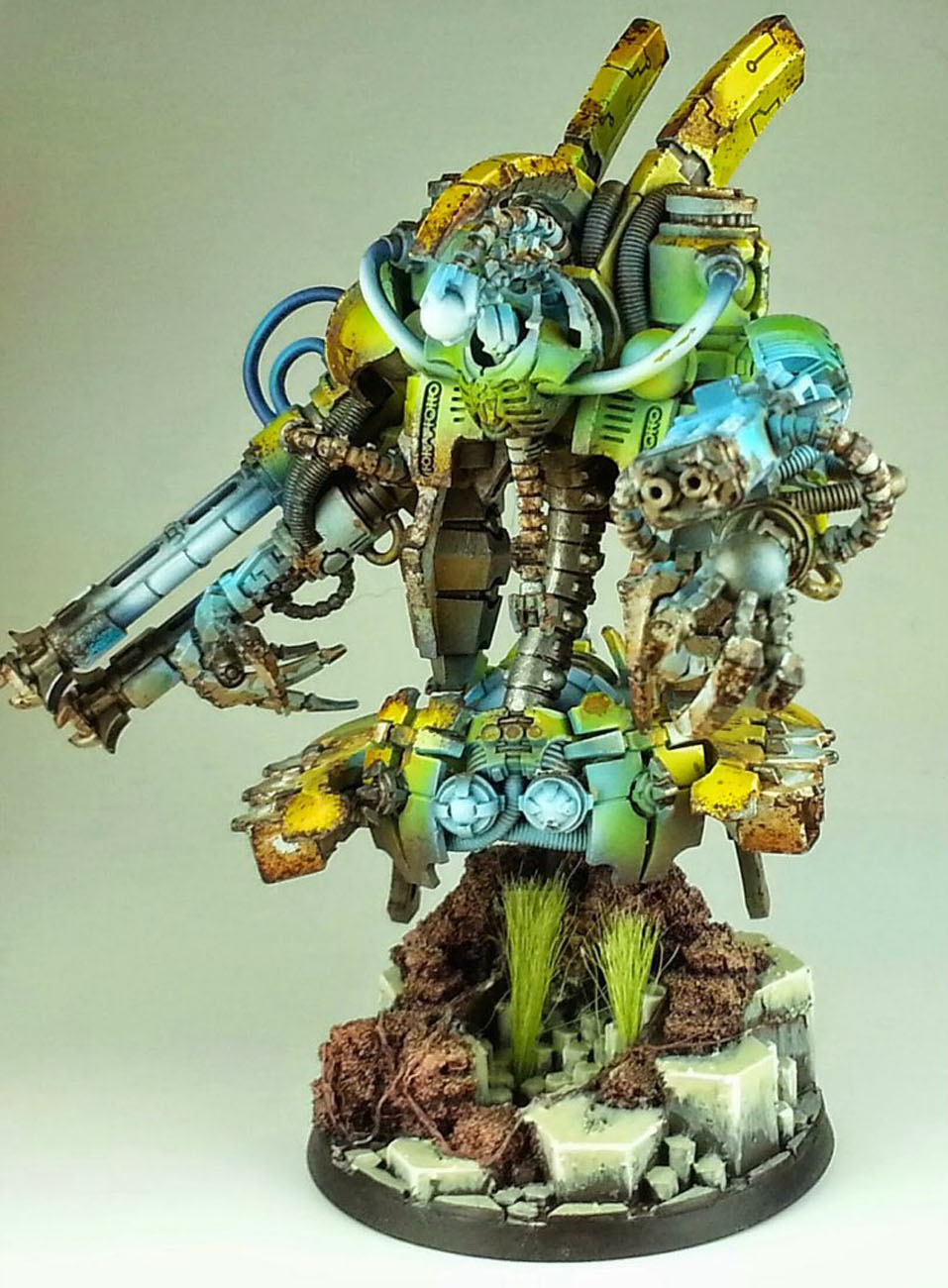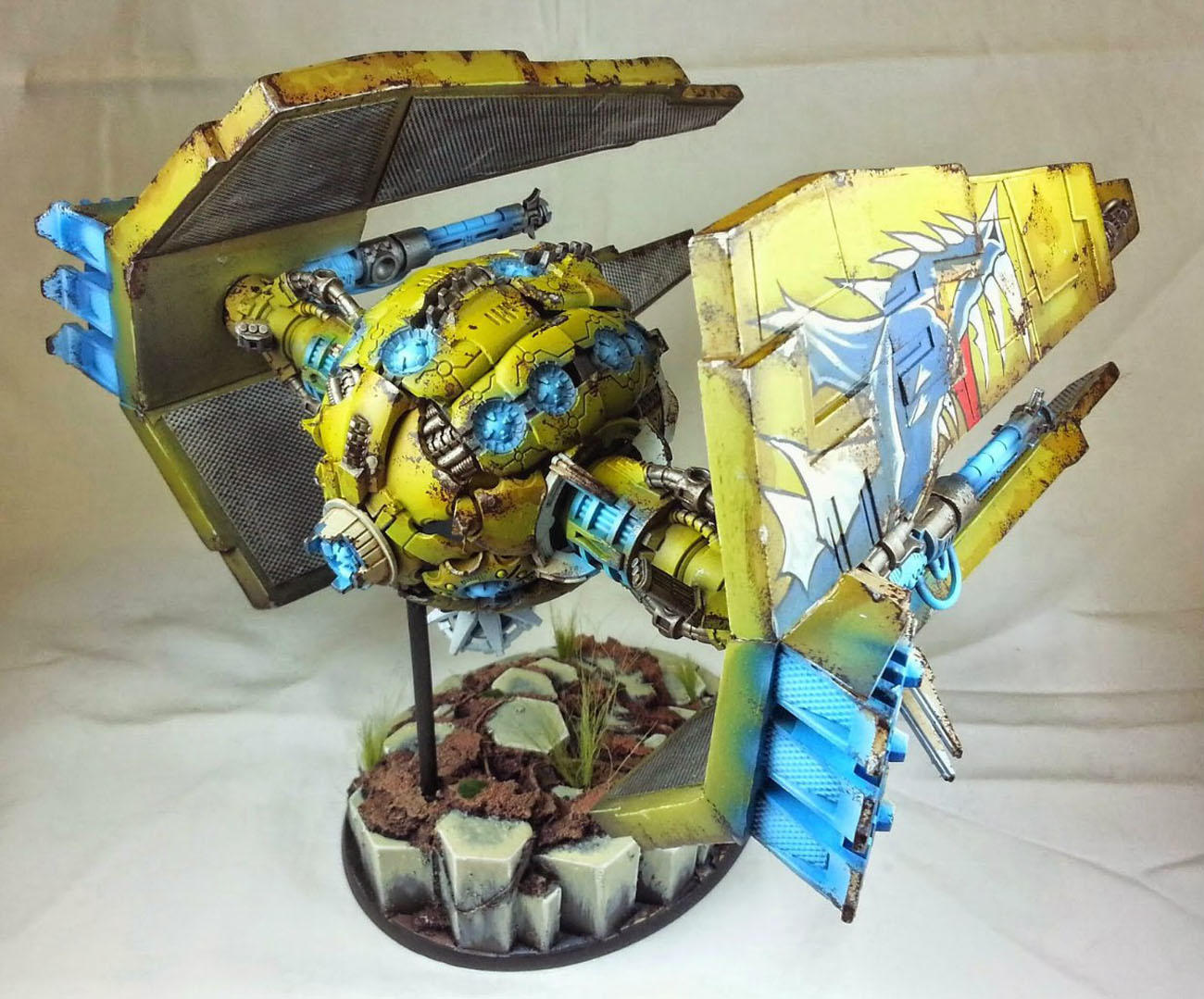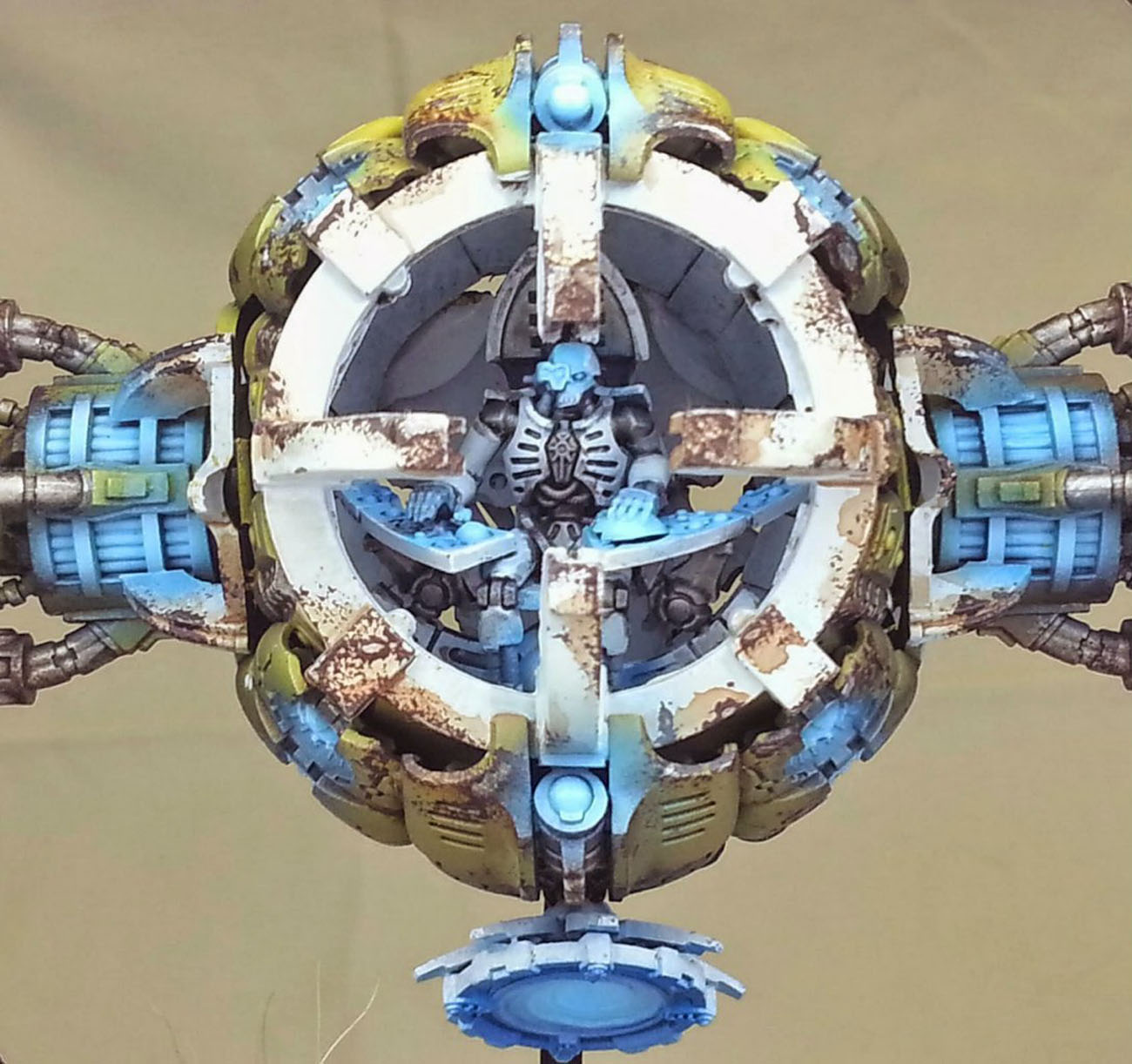We've found a great Necron army for you. These conversions will help to improve the original models, which are a little bit boring. Besides, pay attention at the great glowing effect and nice old metal.
All Necrons are tall, skeletal figures made of a living metal called Necrodermis that provides excellent protection in battle and is able to repair itself if damaged, allowing even heavily damaged Necrons to rise up and do battle once more.
An interesting phenomenon of the Necrons is that when a battle has turned strongly against them, their entire army will simply vanish from the battlefield using unknown phase technology. This includes even 'dead' Necrons (those who have not yet repaired themselves) and those already engaged in close combat. Because of this, enemy forces like the Imperium have had great difficulty in obtaining Necron artifacts or "corpses" to study.
Of all Necron Lords, a Necron Overlord is by far the most powerful and dangerous. At his command are uncountable legions of Necron Warriors, terrifying war machines and a vast array of devastating weaponry that could shatter entire worlds given half the chance. When he marches to war, the Necron Overlord does so with the surety of victory -- he has cogitated and calculated every possible outcome in the ensuing conflict and formulated strategies to ensure that everything goes to plan. Only the most unlikely situations can outfox him and only the most potent foes have any chance of beating him in combat. Weapons glance off his armour or simply pass straight through him as he shifts in and out of reality using the Necrons phase shifting technology. In return, his own attacks are brutally meticulous as he severs heads, shatters armour and pulverises his foes with every swing of his ancient blade. Should a Necron Overlord rise to the position of Phaeron, and ruler of an entire sector, then few will have the strength to stand before his might.
Necrodermis is the xenos material created millions of years ago by the Necrontyr species that is often described as "living metal." Literally, the name means "corpse skin" (from Greek νεκρος and δερμις, or dermis). It was originally used by the Necrontyr to construct their massive sub-light starships that explored and settled the Milky Way Galaxy millions of years ago. It was later adapted to create the robotic bodies possessed by the C'tan and inhabited by the Necrontyr after they agreed to have their consciousnesses transferred from their short-lived organic forms. This process transformed the Necrontyr into the undying Necrons.
Canoptek Spyders are huge metal constructs, their immense weight effortlessly propelled by sophisticated anti-gravitic engines. Their bodies are large and rounded in order to accommodate the internal systems that construct the smaller constructs known as Canoptek Scarabs as needed. This, combined with their multiple limbs and compound visual sensors, give an arachnoid aspect that enhances the fearful appearance of these monstrous robots. The fabricator claws that allow Canoptek Spyders to effect repairs on nearly any of the tomb's systems also make for frighteningly destructive weapons, and they sometimes sport additional weaponry. When the Necrons do rise from their crypts, Canoptek Spyders often accompany them in battle, both for their combat abilities and their capability for repairing damage that is beyond even the abilities of their Necron masters' advanced systems.
A Canoptek Wraith is one of the more sophisticated units employed by the forces of the Necrons. Canoptek Wraiths prowl the corridors of slumbering tombs of a Necron Tomb World, gliding silently through the cyclopean corridors, guarding against intrusion and ensuring the safety of its slumbering occupants. These grotesque floating killers lack legs or body except for a serpentine spinal column, and float over the battlefield using anti-gravity technology like ghosts. Their wide, hunched shoulders support a leering, skull face and long, whip-like arms that wield Necrodermis scalpel blades for fingers and a nightmare array of surgical implements.
A Necron Destroyer Lord is a sentient member of the Necron elite, a former Necron Lord or Overlord, who has fallen prey to the madness of the Necron Destroyers. Even the Necron nobility are not safe from the madness that consumes the Destroyers. When a Necron Lord or Overlord succumbs, a great threat to all life is born. Ironically, the only reason the Imperium is not aware of the extent of this threat is precisely because these Destroyer Lords are so aptly named. No one has borne witness to the atrocities committed by these steel harbingers of apocalypse and lived, and so it can only be guessed at the threat stirring on barren worlds scattered across the galaxy.
The Tomb Stalker is a massive Necron construct that serves as a guardian on Necron Tomb Worlds. The Tomb Stalker is the Necron equivalent of a small Imperial Battle Titan. During their long periods of dormancy the Necrons left their sepulchres guarded by silent, tireless machines. Of these powerful constructs, the most fearsome known to Mankind is the Tomb Stalker. The Tomb Stalker is an enormous mass of living-metal carapace teeming with flashing legs and possessed of a murderous will. Easily the size of a dozen men, this centipede-like robotic construct makes use of arcane Phase Generators, allowing it to stalk the Tomb World of its slumbering Necron lords, burrowing through solid ground. It uses its powerful senses to trail its prey from miles away and can sense the frenzied rhythm of a panicked man's heartbeat through hundreds of metres of solid stone. The Stalker's immense size combined with its natural capacity for regeneration as a result of its Necrodermis carapace creates a nearly indestructible creature. Even beyond the more common warriors of the undying Necron legions, these insectoid constructs continue to thrash and fight with deadly ferocity despite damage or dismemberment.
While Necron forces are usually land-based, Necron space vessels are not unheard of, and they are quite possibly much more common than people realize, and simply not seen. This is supported by the Necrons' terrifying ability to appear anywhere using their phase technology. There are more than two dozen records of Necron contacts in space in Imperial archives, and accounts of other intelligent races like the Orks, Eldar and Tau battling Necron fleets also exist. Necron technology is beyond anything the galaxy has ever seen, surpassing even that of the highly advanced Eldar. Their voidships are stunningly fast and agile, equipped with propulsion systems which are capable of travelling interstellar distances without entering the Warp. This is achieved, as far as is known, by somehow making their ships unbound by inertia or mass, allowing them to accelerate almost instantly and infinitely, which explains why Necron voidships are often seen to be visibly decelerating upon reaching the site of battle. This also protects them from many of the practical problems and dangers of Warp travel. All Necron starships are well-armored in necrodermis, equipped with self-repair systems and utilize some sort of advanced stealth technology which makes them difficult to detect for enemy targeting systems, granting Necron vessels surprising staying power.
In every battle so far the Necrons could only be defeated by superior numbers, and engaging Necrons on even terms proved to be suicidal. Fortunately, all of the Necron fleets encountered so far were small task forces that usually disengaged and phased out like their land-based counterparts, rather than putting up a full fight. But their frequency seems to be increasing and the possibility of a massive Necron attack is dreaded by the Imperium as well as other sentient races. Even as a raiding force, they are a serious threat because they are fully capable of outmanoeuvring most other fleets (probably with the exception of the Eldar and their dark kin) to pick fights on an even footing. This often leads to catastrophic losses for enemy fleets and forces them to somehow stall with an utterly inferior fighting force for overwhelming reinforcements to arrive, at which point the Necrons simply disengage and phase away.
